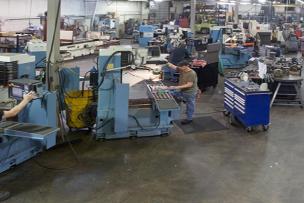How to Use—and not Use—OEE
It’s important to note that OEE is not necessarily a useful metric for every manufacturing operation. “Measuring OEE only makes sense if you are trying to meet a certain demand on a daily basis,” explains Paul Bryant, senior OPEX manager, LENOX Tools. “If you have a problem with yield, then I would definitely suggest OEE.
“If you have a problem with inconsistent production output and/or downtime on a piece of manufacturing equipment, OEE is a great way to measure and identify how to where to improve your operations,” Bryant continues. However, for smaller metal-cutting operations that are more custom and low volume, Bryant says OEE probably isn’t worth measuring.
Bryant also says that a lot of shops use OEE incorrectly. Specifically, he says there are two common ways metal-cutting operations misuse the metric:
- Too Focused on the Benchmark. “Everyone knows that world-class OEE is 85%, but too many people get hung up on that number and how their shop compares to it. When I look at OEE, the number doesn’t mean much to me. I look at three components—availability, performance, and quality—and then break them apart and look for opportunities. That is the true essence of OEE: To find opportunities that help keep your machine and production system optimal.”
- Too Focused on the Operator. “Another misuse is that people use OEE to measure the operator. OEE is used to measure equipment. If you run into an issue with the metric, look at the machine first. There are so many variables, don’t always assume it is the operator. Once you’ve evaluated the machine, look at the material and then the operator last.”
An article from IndustryWeek (IW) adds that OEE should be used as an improvement measure, not a Key Performance Indicator (KPI). It also states that it is best used on a single piece of equipment or synchronized line.
Finally, if your shop is ready to start measuring OEE but doesn’t know where to start, enlist the help of some key suppliers. As stated in the eBook, Five Performance-Boosting Best Practices for Your Industrial Metal-Cutting Company, many companies don’t possess all of the knowledge, resources, or infrastructure necessary to do in-depth measurement. This is where a willing supply partner can help. In today’s competitive market, there are plenty of equipment and tooling suppliers that are willing to share their knowledge and experience as a free, value-added service.




Talk to Us!
Leave a reply
Your email address will not be published. Required fields are marked *